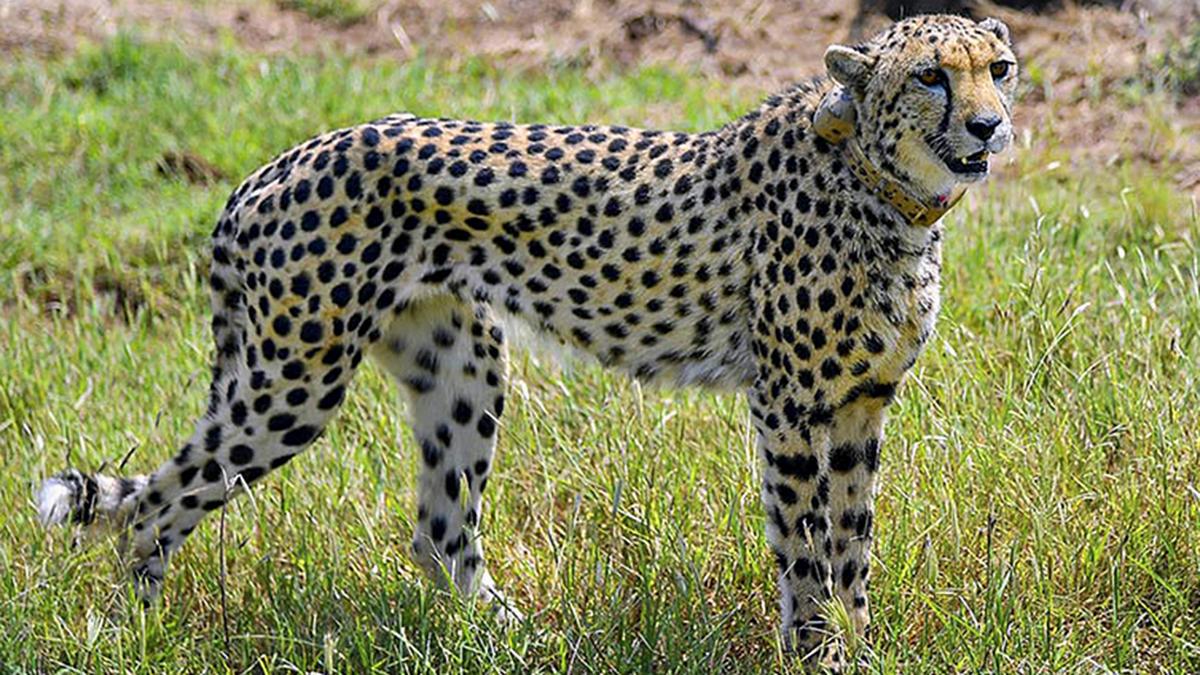
‘Project Cheetah is a distraction that conservation in India can ill afford’ Premium
The Hindu
On September 17, 2022, eight African cheetahs from Nambia, three males and five females, arrived on the Indian soil, kickstarting Project Cheetah, India’s ambitious attempt to bring the world’s fastest land animal back to the country. Today, a year and a half later, what is the status of the project? Are its goals feasible and is the massive cost of it justified? If yes, will it be possible to sustain a free-ranging cheetah population in the long run?
On September 17, 2022, eight African cheetahs from Nambia, three males and five females, arrived on the Indian soil, kickstarting Project Cheetah, India’s ambitious attempt to bring the world’s fastest land animal back to the country. Today, a year and a half later, what is the status of the project? Are its goals feasible and is the massive cost of it justified? If yes, will it be possible to sustain a free-ranging cheetah population in the long run?
These were some of the questions that were addressed at a panel discussion conducted by the Leadership for Conservation in Africa (LCA), an organisation dedicated to protecting biodiversity in Africa, as part of its Unlocking Nature series. The panel, titled A Short History of India’s Attempt to Introduce African Cheetahs, included Dr. Ravi Chellam, a Bengaluru-based wildlife biologist and conservation scientist, wildlife veterinarian Dr. Willem Daffue who practices at Kroonstad Animal Hospital, and Dr. Gus Mills, one of the global experts on the ecology and behaviour of wild cheetah with 40 years experience studying large African carnivores.
Delving deep into the topic, the panellists outlined the historical background of cheetah extinction in India, the Indian Government’s plan to introduce the African cheetah to India, the current status of these cheetahs, and the road ahead.
The IUCN Red List of Threatened Species categorises the cheetah as ‘vulnerable’– facing a high risk of extinction in the wild. “The bulk of the current distribution is in Africa with their population estimated to be around 6500 adult cats as per the 2021 estimate of IUCN,” says Chellam.
However, there was a time in the not-so-distant past, when the grasslands of India were home to scores of Asiatic cheetahs, slightly smaller and slimmer than the African subspecies, of which there are at least three recognised ones. “Cheetahs were found through much of India,” says Chellam, sharing a map of their historical distribution based on hunting and other records. “There is no doubt about the fact that they had a wide-ranging distribution.”
Both the Indian royalty and the British officials stationed in the country captured these animals for sport-hunting, and they were treated like pet dogs or hounds, used for the coursing of blackbuck from the 1550s, says Chellam. “Then, in 1871 the British declared a bounty for killing them. We also had hunting, depletion of prey, habitat loss…”
All this collectively led to a dramatic population decline of these cats, and over time, their extinction. In 1952, the Asiatic cheetah was declared extinct in India, five years after Ramanuj Pratap Singh Deo, the Maharaja of Koriya, now a district of Chhattisgarh, in 1947, shot dead what was then thought to have been the last cheetah in the subcontinent, though there were a few credible sightings till 1967. “Fortunately, there is still a surviving population of Asiatic cheetahs in Iran. The estimate is about 40 animals with only 12 identified adults.”











